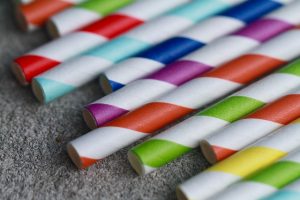Written by Jo Nova
Would you like PFAS with that?
 Wouldn’t you know — to make paper straws resistant to water, it seems we have to add Teflon type chemicals that stick around for thousands of years.
Wouldn’t you know — to make paper straws resistant to water, it seems we have to add Teflon type chemicals that stick around for thousands of years.
Researchers analyzed 39 brands of straws in Belgium and found two thirds contained PFAS, and the paper straws were the worst. Fully 90% of all the paper straws contained some form of PFAS. 80% of Bamboo straws did too, as did 75% of plastic straws. Even 40% of glass straws contained PFAS. The only type of straws that were free of it were steel.
The UK, Canadian, Belgium, New Zealand, and Australian governments banned plastic straws, as did some US States because “they were bad for the environment”.
Paper drinking straws may be harmful and may not be better for the environment than plastic versions
Science Daily
In the first analysis of its kind in Europe, and only the second in the world, Belgian researchers tested 39 brands of straws for the group of synthetic chemicals known as poly- and perfluoroalkyl substances (PFAS).
PFAS were found in the majority of the straws tested and were most common in those made from paper and bamboo, the study, published in the peer-reviewed journal Food Additives and Contaminants, found.
PFAS are used to make everyday products, from outdoor clothing to non-stick pans, resistant to water, heat and stains. They are, however, potentially harmful to people, wildlife and the environment.
They break down very slowly over time and can persist over thousands of years in the environment, a property that has led to them being known as “forever chemicals.”
They have been associated with a number of health problems, including lower response to vaccines, lower birth weight, thyroid disease, increased cholesterol levels, liver damage, kidney cancer and testicular cancer.
Maybe accidental, maybe not…
It isn’t known whether the PFAS were added to the straws by the manufacturers for waterproofing or whether were the result of contamination. Potential sources of contamination include the soil the plant-based materials were grown in and the water used in the manufacturing process.
However, the presence of the chemicals in almost every brand of paper straw means it is likely that it was, in some cases, being used as a water-repellent coating, say the researchers.
Calling these straws “paper”, 100% biodegradable and fully compostable seems like false advertising.
H/t to Reader
Image by rodgersm222 from Pixabay